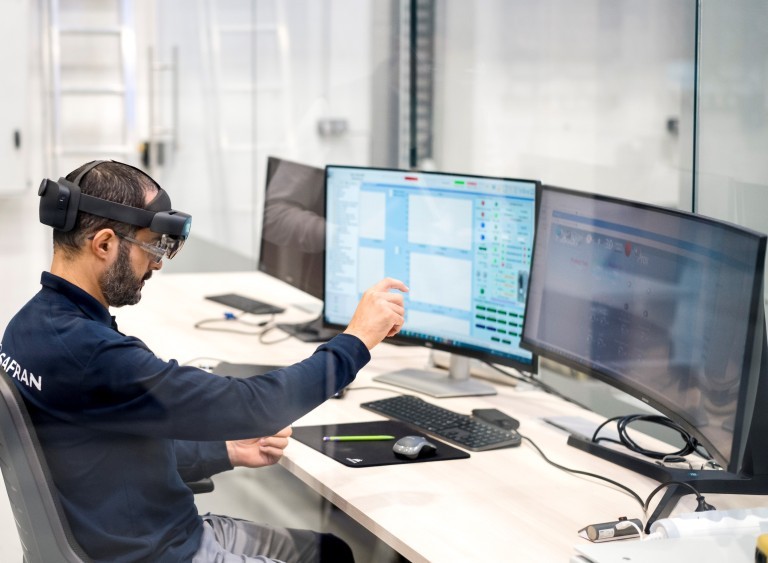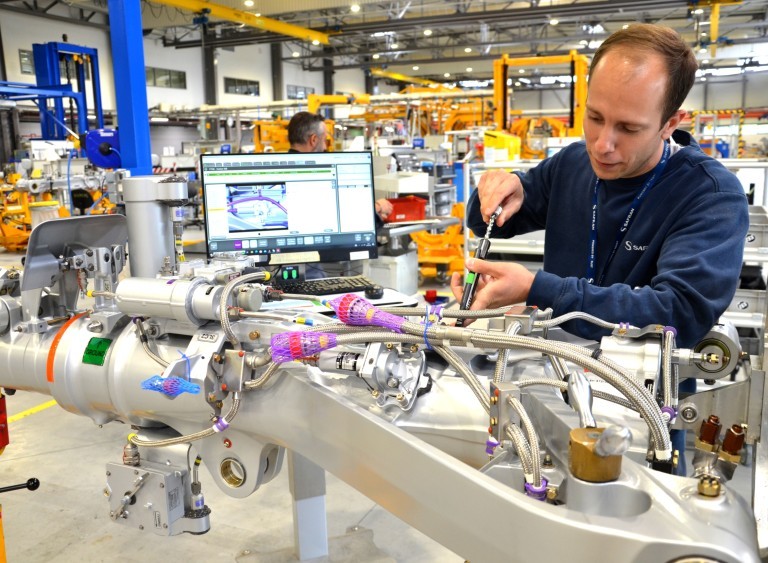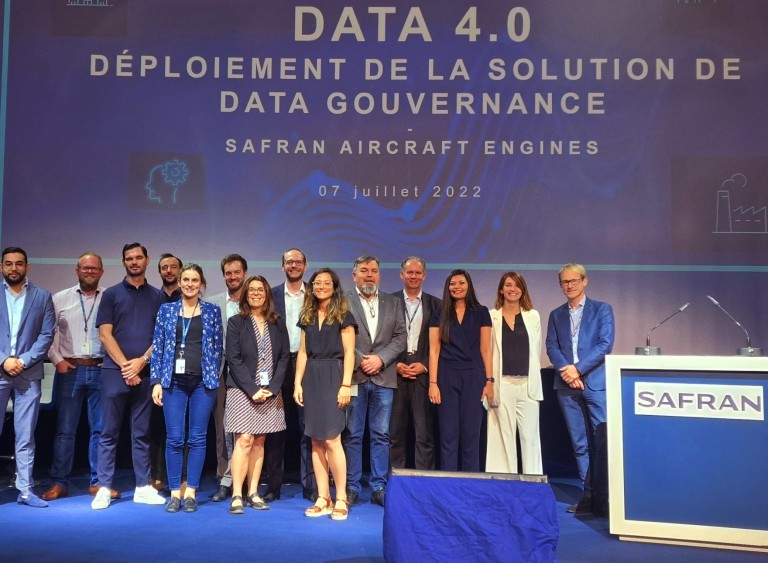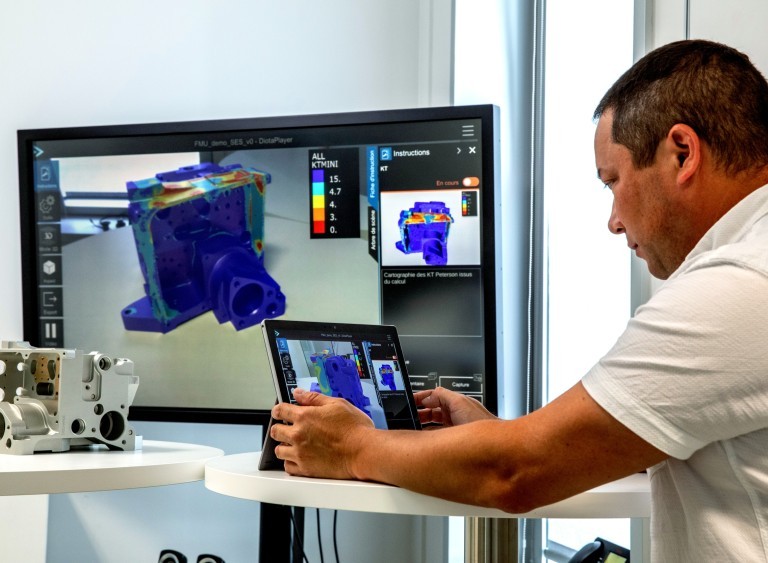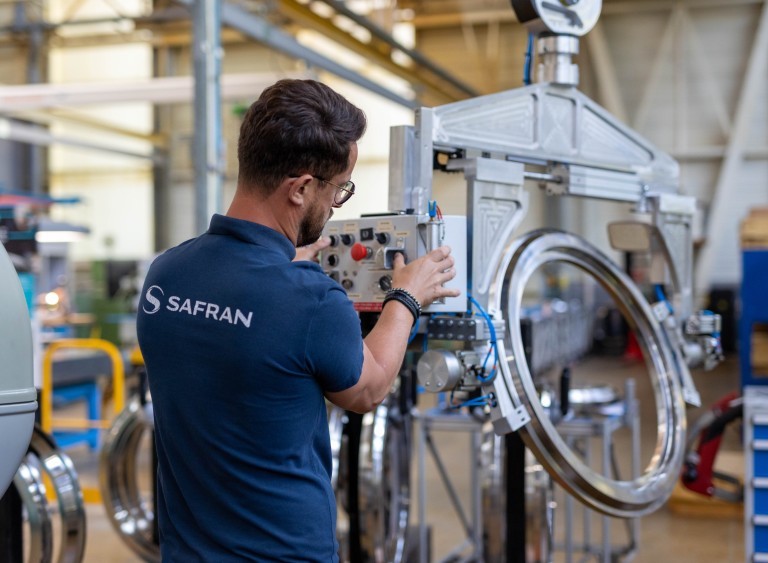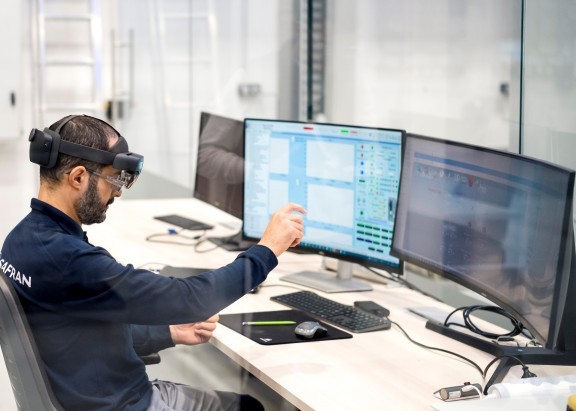
“Data science teaches us something new about our machines and products every day!”
Absa Mare and Éric Dubois, Improvement and IT directors at Safran Transmission Systems, and Sébastien Aeberli, Chief Data Officer at Safran Aircraft Engines, explain the key role of data in innovative product development, especially for the CFM RISE (Revolutionary Innovation for Sustainable Engines) program.
- Perspective
- At a glance
- Discovery
Merlot, Pixel, Astre… What’s behind the various digital transformation projects underway at Safran Transmission Systems?
Merlot is a group of transversal projects revolving around advanced data analytics. It partly includes the Pixel and Astre projects, each of which covers complementary areas. Both these projects are designed to simultaneously analyze manufacturing and test data.
Correlating manufacturing and test data is one of the strategic aims of data analytics at Safran Transmission Systems.
The Pixel project was launched in 2020 to meet a specific requirement of Safran Transmission Systems’ Industrial Innovation and Competency Center (CC2i). Integrated into the Colombes production shop, this state-of-the-art facility is an innovation incubator for industrial processes. It allows the company to check out the robustness of future technologies and manufacturing processes.
Pixel was developed collaboratively with Safran Analytics to collect and analyze manufacturing data as part of the company’s commitment to continuously improve part design and production.
The Astre project addresses the need to improve test data. It does this by capturing, storing and sharing the data generated by test benches so that it can then be processed and analyzed using powerful tools.
What’s the purpose of this project?
Originally, CC2i needed to improve its production processes, since it doesn’t produce parts in volume yet. The challenge was to collect data from production machinery and integrate it into advanced tools to reduce the number of iterations, ultimately aiming to “get it right first time” – including prototypes. To achieve this, when manufacturing a part we needed to better control both our input data (“as planned”) and our output data (“as built”). Before this project came into being, we didn’t have the tools to extract, store, classify and analyze data from our machines.

Pixel analyzes machine data so that we can hone the manufacturing process for innovative new products.
What are your expectations for this project?
The purpose of the Pixel project is to analyze machine and product data so we can achieve project and product milestones more easily.
More widespread use of data analytics speeds time to market and takes us closer to “getting it right first time”. In addition, Pixel improves prototype production by helping us optimize manufacturing at every level. In the long run, it helps us save time and reduce the costs of poor quality.
And that’s not all! The project also fosters synergies, especially between engineering and manufacturing. Safran Transmission Systems is all in favor of this convergence, which helps spawn innovative technical solutions.
Advanced data analytics tools have instilled a new dynamic across teams and projects, and this is highly valued at Safran Transmission Systems.




